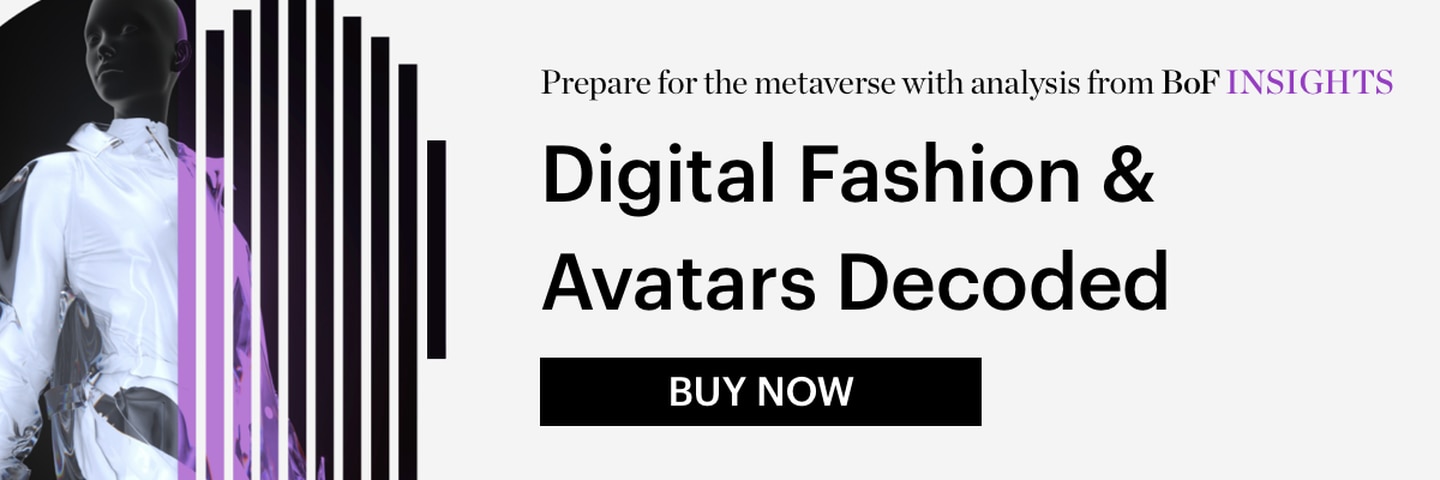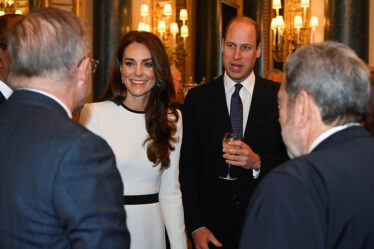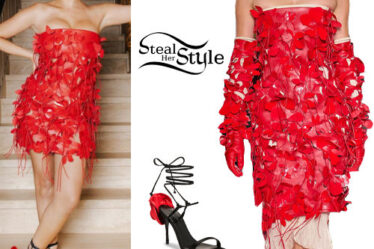
Roblox says it has millions of users designing virtual clothing and accessories for its virtual worlds, and millions more willing to pay for these items to dress their avatars, according to a new survey released Wednesday by the company and Parsons School of Design.
The next challenge? Finding a way for established IRL fashion brands to tap into this market on a bigger scale.
Roblox, whose popularity soared during the pandemic and now averages over 50 million daily users, has given rise to a new wave of virtual designers creating items specifically for the metaverse, while allowing savvy brands and designers to open up new revenue streams by creating metaverse-only products or selling new items virtually before releasing them IRL.
This year, over 11.5 million creators have designed more than 62 million clothing and accessory items — also known as wearables — on Roblox, a 25 percent increase year-on-year from 2021, according to the report, which polled 1,000 users between ages 14 and 24.
Roblox says over half of surveyed users said they change their avatars’ clothing at least every week, based on factors ranging from their mood to impulse-driven purchases, and where they are headed to in the metaverse at any given time. A majority of respondents had spent $5 to $10 on a single clothing or accessory item. A quarter of users owned over 50 items their avatar can wear.
“Just as in real life, it’s fair to say that when you look good, you feel good and that equals confidence,” said Gemma Sheppard, who partnered with Roblox to be the platform’s first ever stylist, and is also the metaverse global fashion director of Dubit, the UK-based digital gaming developer. “So how your avatar is dressed sure as hell matters.”
“Layered Clothing” Opportunities
Much of the virtual clothing for sale on Roblox was created by users, rather than established fashion brands. That’s starting to change, as labels release Roblox-specific gear.
But the platform faces challenges such as the difficulty of making virtual clothing look as good as its physical counterparts, or building long-term interest from consumers when there’s millions of items dropping. Roblox isn’t alone in confronting these challenges — Meta had positioned itself as the metaverse’s biggest champion, but has struggled to convince its billions of users of its appeal. Metaverse Fashion Week in March, which took place in the blockchain-based virtual platform Decentraland, saw technical limitations impede designers translating sophisticated brand images and real-world fashion into the virtual realm.
In April, Roblox launched what it calls “layered clothing,” allowing users to mix and match a number of digital wearables. Users are able to buy a Burberry bag and wear it with a Nike top, a Gucci hat and Tommy Hilfiger jeans, for instance.
Nearly 11 million users have purchased layered clothing items to date, and 157 million have acquired both free and paid items, according to the report.
One example highlighted in the report was a recent collaboration between luxury womenswear brand Carolina Herrera, model Karlie Kloss and Roblox community creator @Lovespun. In September, Kloss wore a Carolina Herrera floral trench gown in the brand’s New York Fashion Week show. Right after, the dress went live as a wearable on Roblox. selling 432 units within four hours. Within a week since launch, the gown was resold multiple times for the equivalent of over $1,000 on Roblox (Roblox’s in-game currency is known as “Robux”) and once for $5,000.
Another benefit of virtual design and layered clothing is that it allows brands a greater degree of experimentation, being able to “drop test” new items of clothing in Roblox, before deciding whether to create and then release physical versions based on their virtual success, Sheppard added, referencing a product drop by fast fashion retailer Forever 21 which sold out on the virtual platform, before being produced for brick and mortar stores.
Key Findings
IRL consumer trends translate to the metaverse. Trends such as Y2K dressing, popular across real life fashion with vintage sportswear, wide-leg jeans and low waisted cargo pants, are also relevant as virtual wearables. From January to September 2022, Roblox saw an 85 percent year-over-year increase in the creation of items labeled as Y2K, compared to the same period the previous year, and a 165 percent year-over-year increase in purchases of unique Y2K virtual items.
Consumers want diverse options in the metaverse. The majority of the survey’s Gen-Z respondents agreed with the importance of digital clothing designs being inclusive. 70 percent stated that having a full range of skin tone and hair colour, textures and style options was important, while 64 percent stressed the need for a full range of body types.
The metaverse allows both brands and consumers scope to experiment. Nearly half of the Gen-Z consumers surveyed look for digital fashion brands and designers to offer new and different clothes they can experiment with, which they wouldn’t otherwise try in real life.
IRL brand names carry cachet in the metaverse. Two thirds of respondents said they were excited to wear brand name virtual items on Roblox. Brands like Forever 21, Alo Yoga, Nike and Puma have all established a presence on Roblox, while luxury labels like Gucci and Burberry have also launched on the platform in recent months. Tommy Hilfiger streamed its September New York Fashion week show, live, in a virtual simulation of the city on Roblox.


